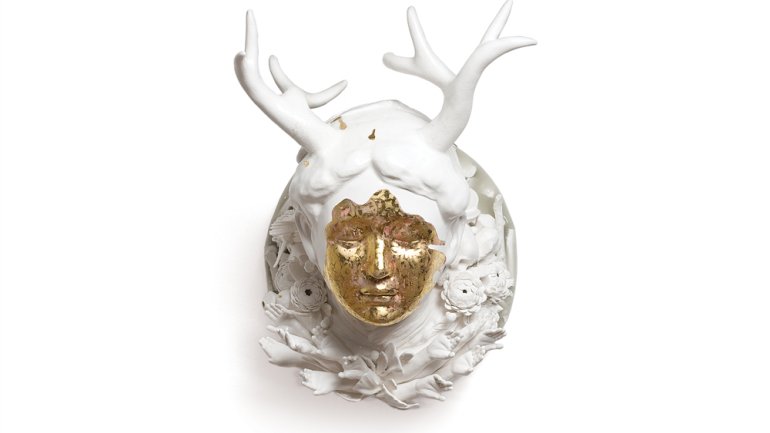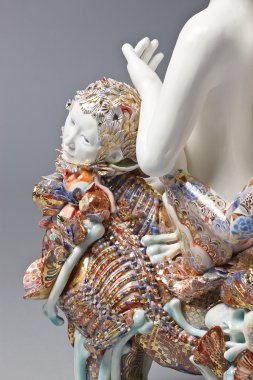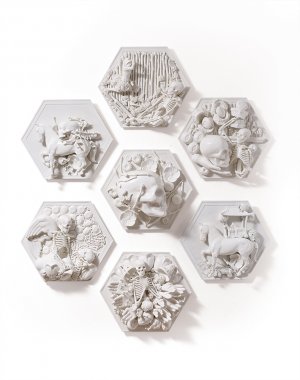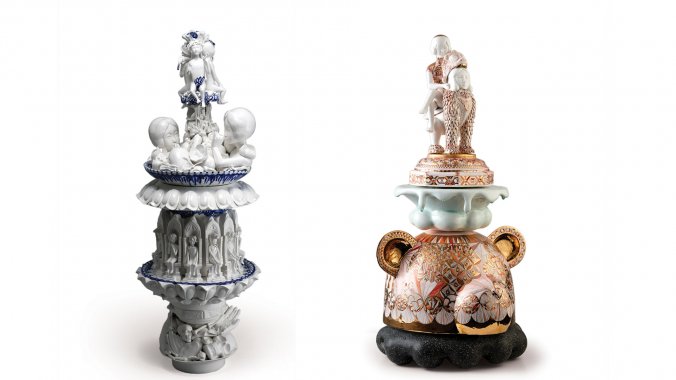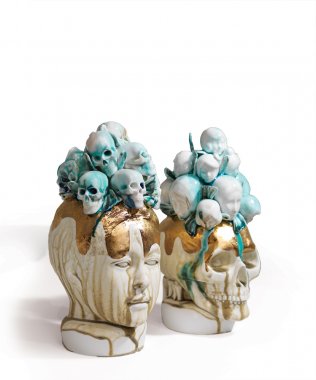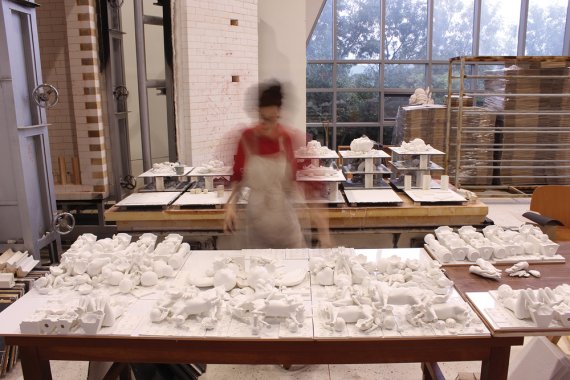Korea: Twice-Told Tales
Korea: Twice-Told Tales
Yunhee Lee calls herself a collector. In one sense, it’s easy to see why. In her porcelain figures, the Seoul ceramist has clearly gathered the influences of Korea’s traditions, shaping precise limbs and expressive faces out of a material strongly associated with the country’s making legacy. Her gold glazes and blue surface designs evoke centuries of ceramic work.
But Lee’s understanding of herself as a collector has another meaning. “She’s collecting the stories and emotions of people around her, especially anxiety and the dark side of the mind,” says Jooyeon Woo, of Gallery Huue in Seoul, which shows Lee’s work. Her sculptures often depict people racked with worry or fear, as if confronting some harrowing circumstance. Sometimes they feature disturbing images. In Pilgrim (2016), a white porcelain head is topped with miniature skulls, next to a white porcelain skull topped with miniature heads. Lee’s surface designs include hanging vines or splintered, abstract motifs – or pieces are covered entirely in black, suggesting a burdened mind.
Lee, 33, honed her technical skills in the ceramics department at Hongik University in Seoul, where she earned a BFA in 2008 and an MFA four years later. The references in Lee’s sculpture reflect her expansive understanding of her artistic tradition. “If you take a closer look at her work,” Woo says, “you will find cultural elements of Asian and Western, classical and contemporary.” One example: her combination of a griffin – a staple of Western mythology – wearing the mask of a haitai, a creature from Korean folklore.
Lee’s father was a carpenter who built Buddhist temples, and members of her family practice numerous religions. (She is Christian.) When she was young, she dreamed of working in restoration, preserving the artifacts of different traditions.
From 2013 to 2016, Lee undertook a restoration of a different sort. Her installation La Divina Commedia reimagines Dante’s epic poem in a series of tiles framing bas-relief vignettes that sometimes spill over the borders. The individual pieces, each stark white, echo the stories of Dante’s journey through the afterlife. In Lee’s retelling, however, the protagonist is not a middle-aged man but a young girl in the here and now, dealing with life’s travails, both philosophical and practical.
The trajectory of Lee’s career – and the nature of her creative ethos – brings to mind the porcelain flowers she so convincingly re-creates. Her training and technique are the deep roots, her instincts petals reaching outward. Even more than her sculptural chops, her core talent is inclusion, the ability to bring more and more into her work – myth, family history, modern stresses. Though Lee’s work is layered with historical references and her personal perspective, Woo notes that viewers have a way in, too: “People can make their own story with what she expresses.”
